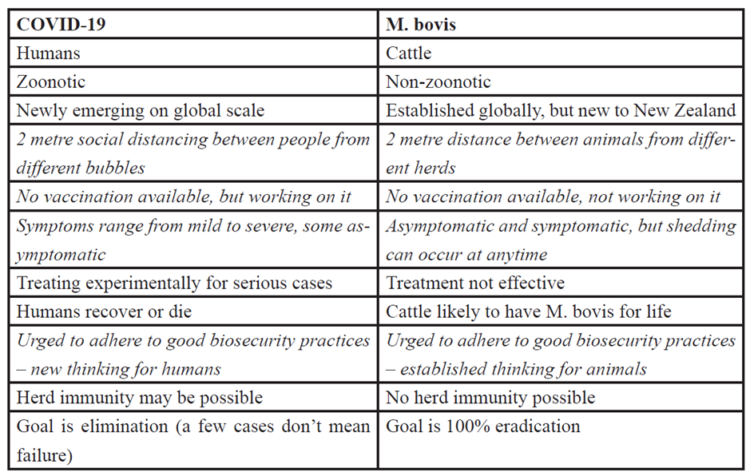Author: McDonald, D. A.
Published in National Security Journal, 24 August 2020
practices being in place for both species; some humans/cattle will remain asymptomatic whilst infected; and there are no reliable vaccination options for either disease. There are also some important differences between the two diseases and their management: M.bovis is non-zoonotic, and COVID-19 originates in animals; cattle are likely to haveM.bovis for life, whereas people may build up (limited) immunity to COVID-19;102 herd immunity is not possible for M. bovis, but it may be a possible strategy againstCOVID-19 through vaccination or recovery; and the goal is eradication for M. bovis(cattle are culled), yet the goal for COVID-19 is elimination (humans are ideally cured).
Figure 1: Comparative analysis between COVID-19 and M. bovis103
COVID-19 highlights how the smallest of ‘unwanted organisms’ (a virus) can influence states’ leaders to quarantine the globe in a manner reminiscent of national animal biosecurity management (for M. bovis).104 Biosecurity practices being used to deal with infectious human diseases is a new phenomenon for New Zealanders; we are used to biosecurity measures being taken to quarantine animals and plants, but we are not experienced with these being applied to ourselves. The lessons learned from the M. bovis biosecurity response have been partially credited for New Zealand’s swift and successful elimination of COVID-19.105 In turn, the learning gained from managing COVID-19 and its many impacts will help us to reconsider how animal biosecurity is understood
